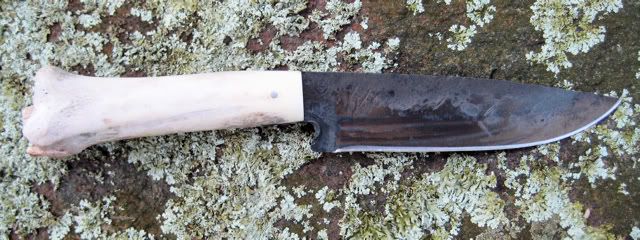I seem to be on a new Quest. I love old looking blades and the anatomy of old bones. I'd probably be a much better hunter if I'd look up instead of searching the ground for bones, antlers, or any kinda of handle material

I was looking for info on browning...making blades look old like Daniel Winkler seems to do so well. I thank ya'll for your responses but I decided to call Dan. He doesn't know me from Adam except I did purchase a patch knife from him about 20 years ago

He answered my call and couldn't have been nicer. Gave me his ideas on antiquing blades with out any hesitation and wished me good forging. Now I'm into making some blades that look old but have very nice grinds and edges...after all that's what a knife is really about.
Mini Forge Along:
It always amazes me that you start a blade curved exactly opposite of the final shape you want it to end up. I fought this concept my first few years of forging...not too smart!
5160 bar stock with tip tapered (I still fight that fish mouth end). Then the start of my ricasso and edge with the edge of the blade bending down.
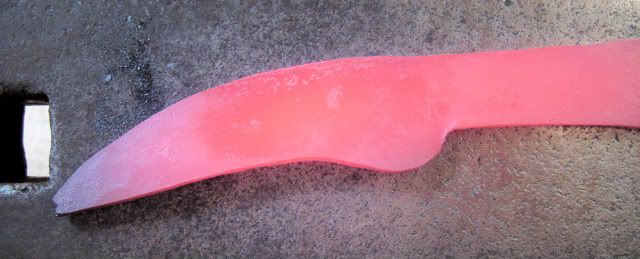
Then as you thin the edge, the tip will start curving back up.

I added a small Winkler style flared finger groove.
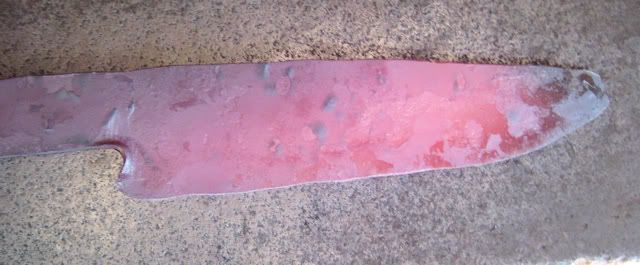
Once I get the general shape I want, I'll forge at progressively cooler temperature. Finally grinding the profile shape out on my bench grinder. Now I forge to almost completion and just minimally grind my blade bevel. I even take it back into the forge to add some hammer marks on the nice blade grind to make it look like you found a 1850's mountain-man blade!
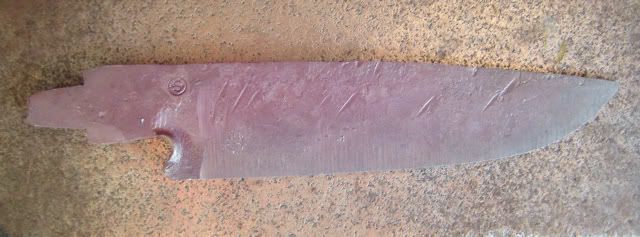
Fit the blade to my piece of bone, drill my pin hole, grind to a convex finished edge, and quench.
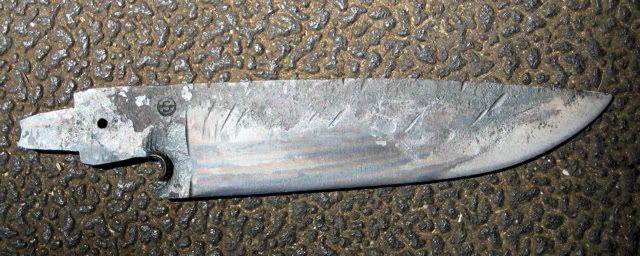
Once tempered & fitted, I just sharpen without any finishing of the blade....tippit
